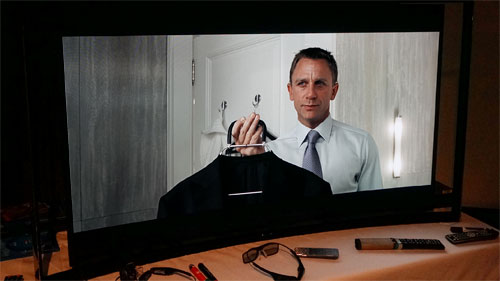Samsung could be on the verge of re-entering the OLED TV race following an announcement from startup Kateeva that it’s perfected a new process of making the displays. Kateeva says its method will allow for the production of flexible OLED displays that can conform to almost any size and shape, without sustaining any damage.

The news comes just two months after Kateeva bagged itself $38 million in a funding round led by Samsung, and barely a year after it first unveiled its revolutionary inkjet printing manufacturing solution dubbed YIELDjet. When YIELDjet was announced, Kateeva said the method had the potential to significantly boost production yields and OLED panel lifespan, but it was still far from perfect – it could build curved displays, but these had to be fixed to the required angle during production, as they were encased in glass.
Now, the company has improved upon the method with a new way encapsulating its OLED panels in a flexible substrate. The result is it can now build truly flexible OLED displays for a wide range of devices. Called YIELDJet FLEX, the method is designed to enable the thin-film encapsulation (TFE) process that gives thinness and flexibility to OLED devices.
Kateeva president and co-founder Dr. Conor Madigan said the TFE method would make it possible to build flexible OLED displays for all manner of devices, be it pocket-sized tri-fold smartphones, flexible smartwatches or surface-conforming vehicle displays for smart cars. And of course, the method will also allow someone like Samsung to build large-sized OLED TVs much more efficiently.
“We’re excited to give display manufacturers new horsepower to cost-effectively mass produce flexible OLED panels that make such imaginative products possible,” said Madigan in a statement.
The TFE method is an incredibly complex one, but Kateeva claims it’s far more efficient than the vacuum evaporation approach used by other manufacturers. The problems with vacuum evaporation are two-fold – it’s slow, but more crucially, it’s extremely inefficient. The multi-layer stacks of thin film materials used in OLED displays are incredibly sensitive to water and oxygen, and if just one tiny particle lands on any of these layers, it will cause a defect that severely distorts the finished panel.
YIELDjet FLEX overcomes these problems by depositing thick films at incredibly rapid speeds whilst causing very few defects, resulting in greatly improved yields. And not only is it faster and more reliable, but the technology is scalable up to G8 (98 by 86 inches), which should be plenty big enough for your average living room.
Source: Kateeva